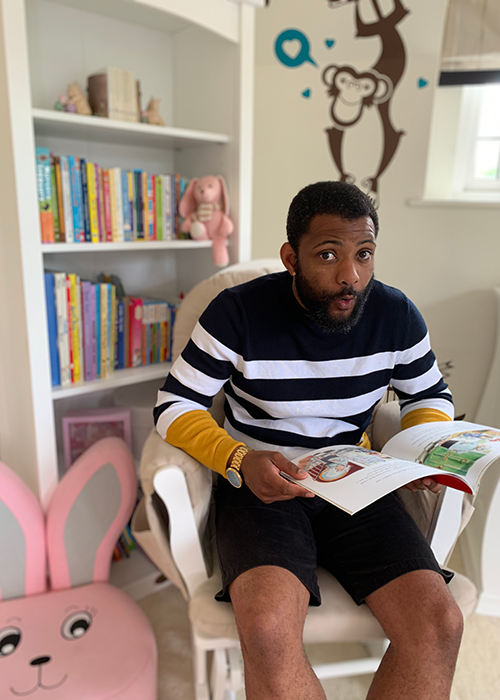- 19/giu/2020
The Barbour Way of Life Guide to: Telling a Good Story with JB Gill
Telling stories is a great way to access another world with a simple turn of a page. Stories help us to learn new things, lose ourselves, get excited — but it’s not just about relaying the words, it’s about how you bring those words to life, especially if your audience is your children. So, we have collaborated with presenter, farmer, and member of JLS, JB Gill, to bring you a guide on how to tell a good story.

Step1: Pick your book
When it comes to telling a good story, I think it’s essential that you pick a good story. Now, when it comes to reading books to my children there are so many different kinds, so many different types. There are prose, there are rhymes…different authors. So, it’s essential that you pick a book that you know is going to resonate with your audience, but also one that you feel is going to work the best, or that you feel is going to make a good story.


Step 2: Understand your audience
As I mentioned, it’s important to understand your audience, because that will help you pick a book that will resonate well with them. Now my daughter is just over eighteen months and she enjoys reading colourful picture books, and that’s because she can flick through all the pages, calling out whatever’s in them. With my son, he would prefer a book that has more chapters and a lot more text, because he’s at a stage of reading his first books (he’s six). Now a book I would read to both of them before bedtime, would have a mixture of the two. It would have a little bit more text but will still have big colourful pictures that will grip the attention of both my daughter and my son. It’s all about figuring out what will work best for all listening.
Step 3: Read it to yourself
Once you’ve chosen your story and made sure it’s perfect for your audience. The next thing you need to do is read the story to yourself, and that’s beneficial in two ways. Firstly, it allows you to get a sense of what the book is like and how you’re going to read it to your audience, and that’s important if it's the first time you’re reading it. Secondly, reading a story to yourself is very different to reading a story to someone else, and you might want to practice using your voice to paint all the imaginative pictures for your listeners.


Stage 4: Get expressive
The next step in the process is to be expressive. Now, I’m no actor, but you can use your voice in lots of different ways to convey a different sense to your audience — to grip them in, and to tell the story that you’re reading a lot better. For example, you can use whispering to add intrigue, or you can use short, expressive sentences to grab attention. All of these things make a story more interesting, especially when you’re reading to children. That is super important.

Step 5: Interact with your audience
The final step to reading a great story is interacting with your audience. So, when I’m reading to my son or my daughter, I always have the book turned towards them so that they can see the pictures in the book and feel even more involved in the story. I’ll always ask questions based on whatever I’m reading, for example if I'm talking about tasting some food, I ask them if they like that food too, or if there’s a particular experience that happens, I ask them how they feel about it, or whether they feel the same as the character in the book. Of course, depending on who the audience is you can add or take away from that interaction accordingly.
Well, there you have it, that is my Barbour Way of Life Guide to telling a good story. Now, I’m off to read a great story with my son right now.
Stay tuned to the Barbour blog, for more in our Barbour Way of Life series, where we’ll be posting more heart-warming, exciting and educational guides.





